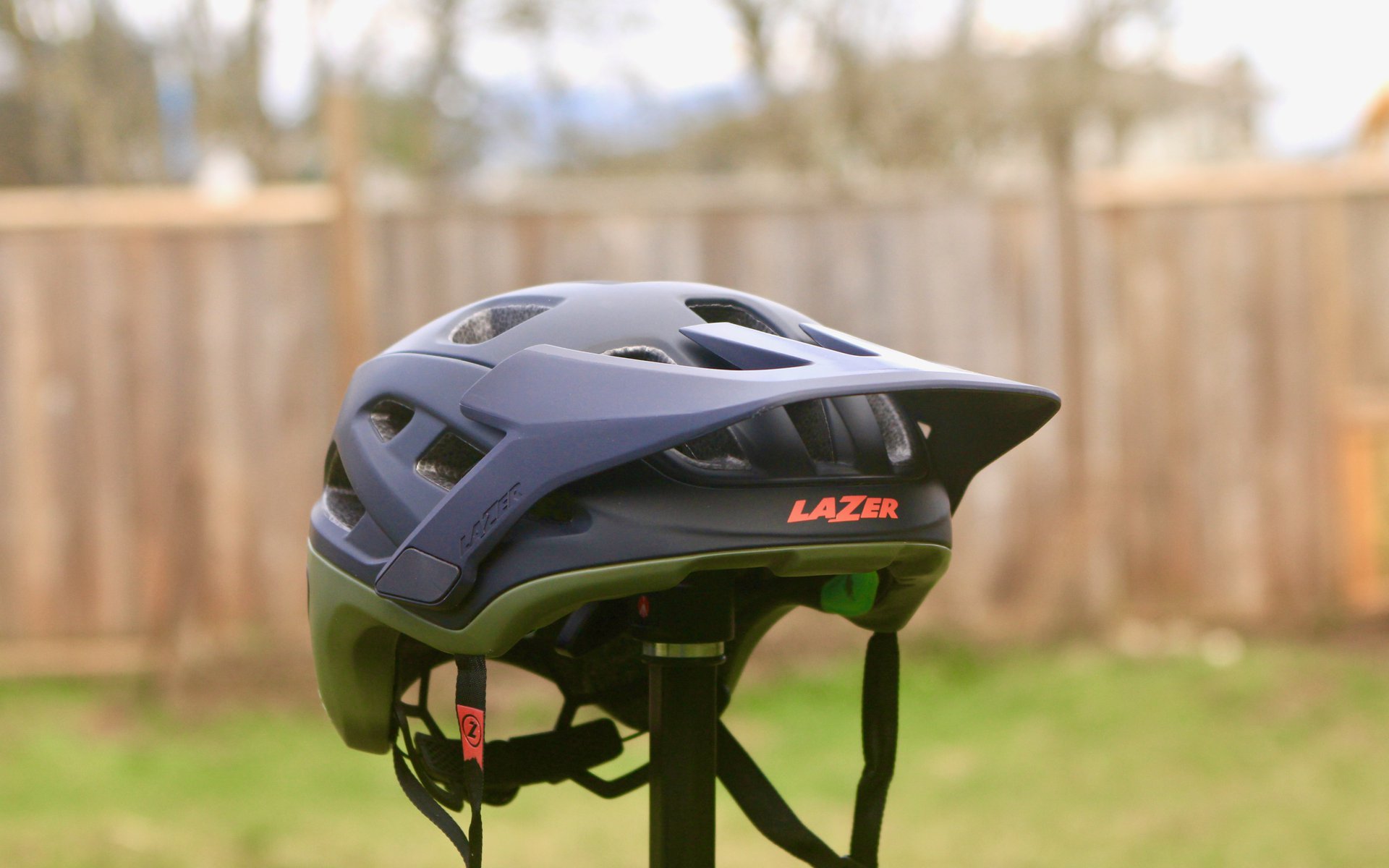
PRODUCT RELEASE / FIRST IMPRESSIONS
Lazer Jackal KinetiCore
Lazer Introduces KinetiCore
In recent years, bike helmet manufacturers have all embraced technology that addresses rotational impacts. That seems logical, since it's easy to imagine that most bike crashes involving impact with your helmet would not involve straight vectors; between momentum, gravity, body language, and uneven surfaces, your head is subject to a lot of competing forces that cause oblique impact angles in a crash.
When addressing rotational impacts, manufacturers have to decide whether to work with existing providers of this technology - MIPS being both the first to the party and the one with the most uptake - or to develop their own, as Leatt has done with 360 Turbine, POC with Spin, Kali with its Fusion and Low Density Layer, Trek with WaveCel and so on. Until now, Lazer used MIPS across its line, which made good sense because MIPS is now by far the most recognizable brand in rotational impact safety for helmets. However, Lazer has been working on their own system for a while, and they're calling it KinetiCore. The helmet I have here to test is the Lazer Jackal KinetiCore, which replaces the Jackal MIPS.
Unfortunately I only received the helmet a few days ago, so my time with it is limited, but initial impressions are positive, and KinetiCore is quite interesting.
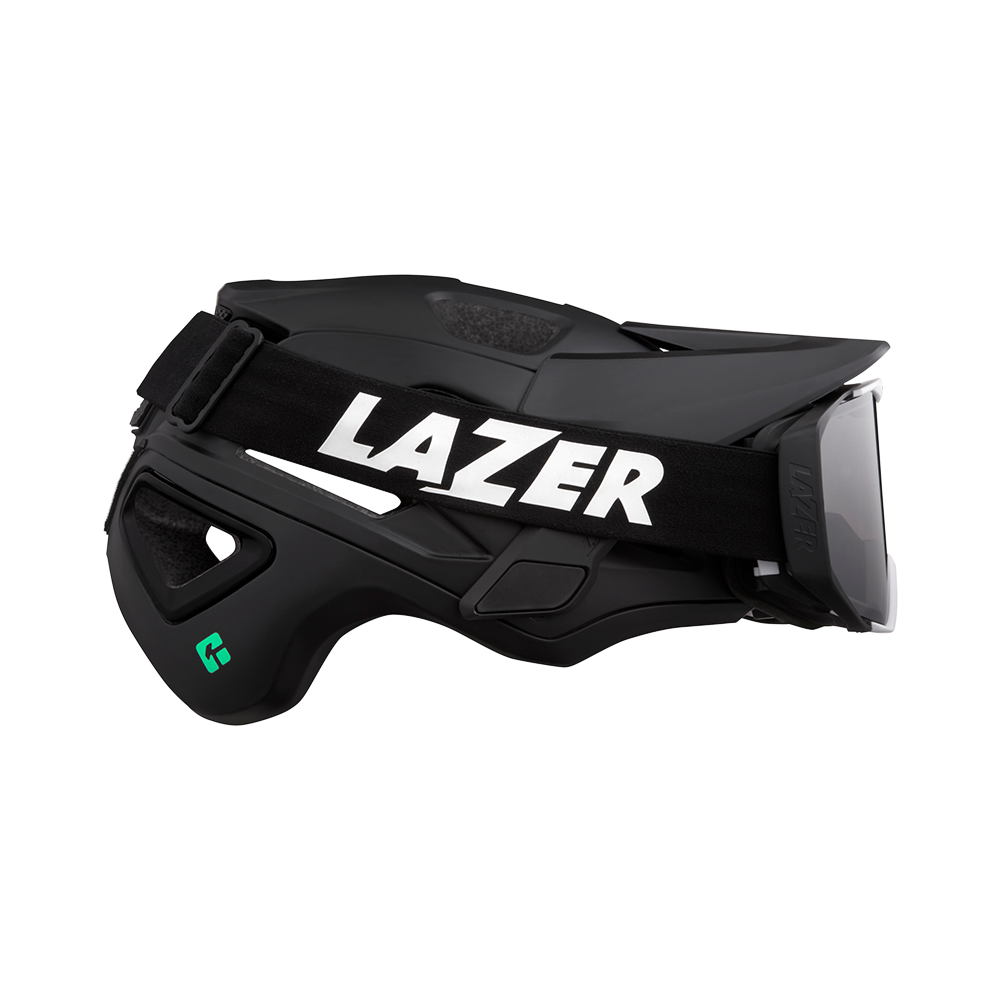
The new Jackal KinetiCore comes in 5 colours: Matte Black
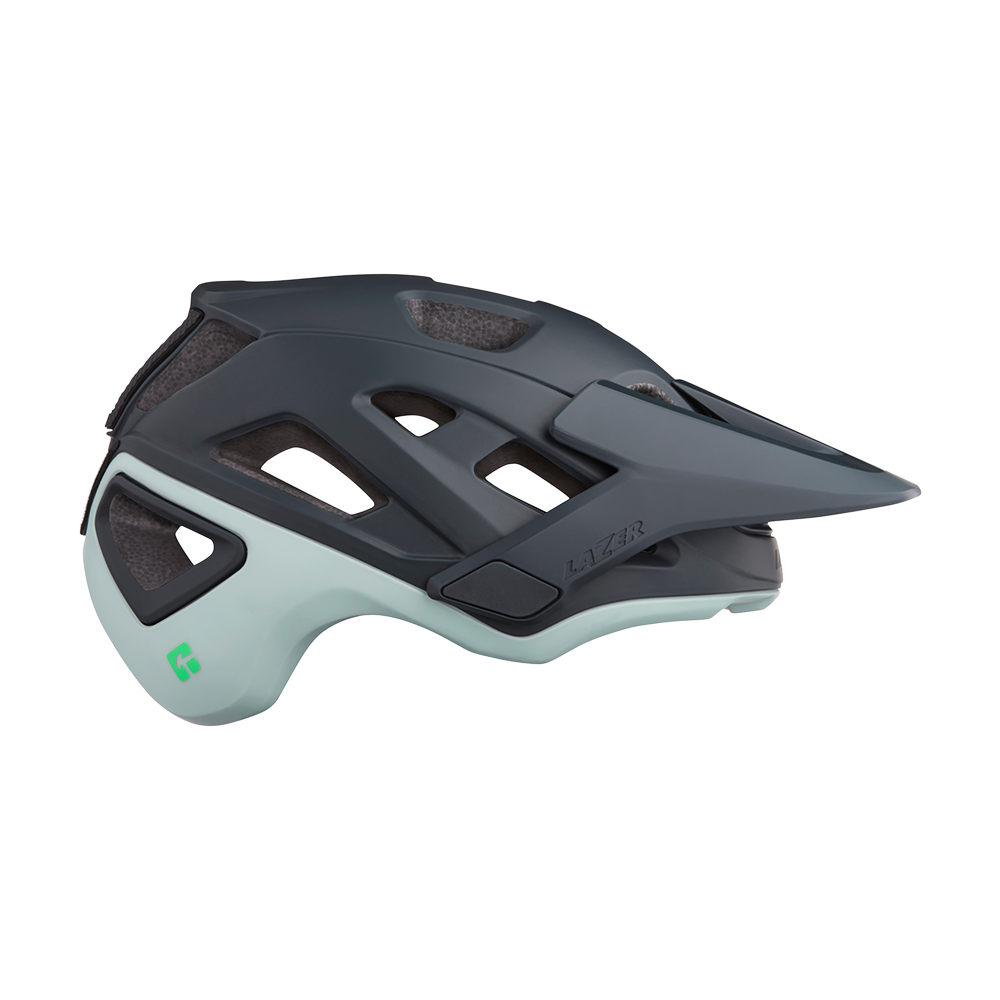
Matte Blue
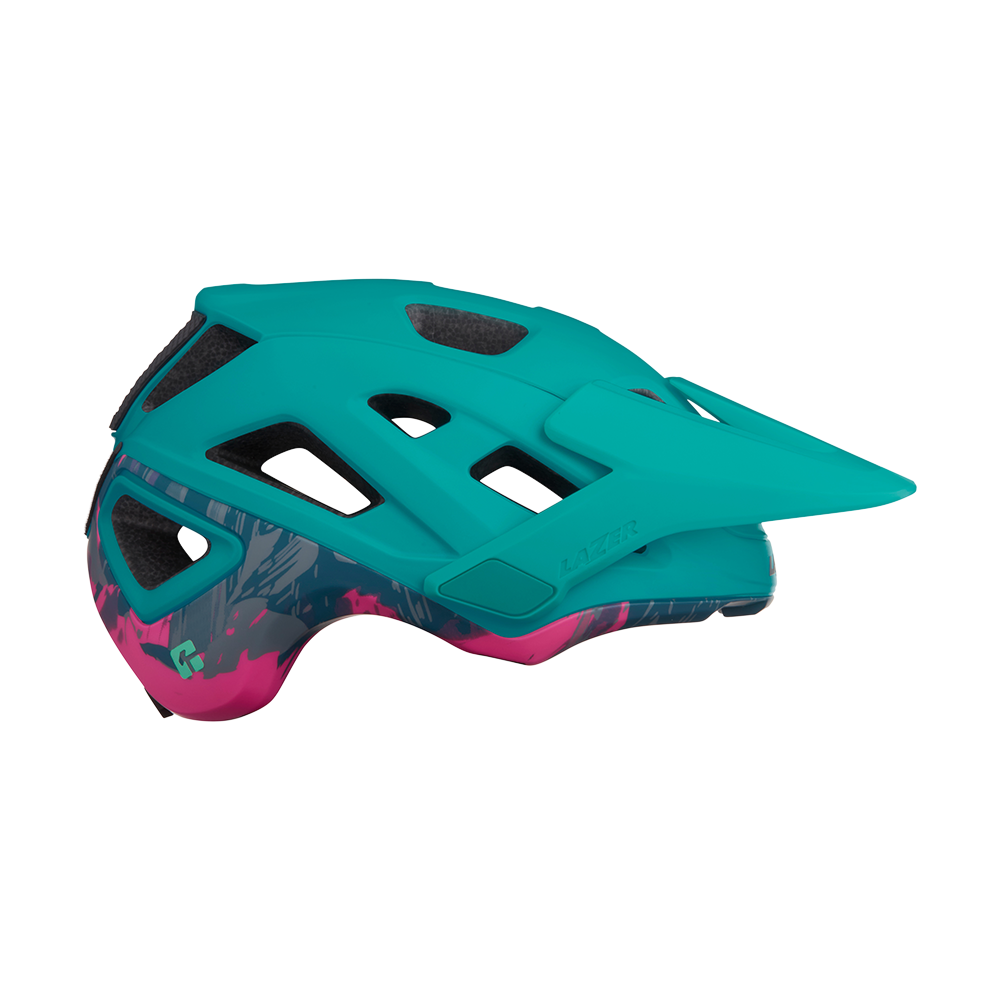
Matte Turquoise
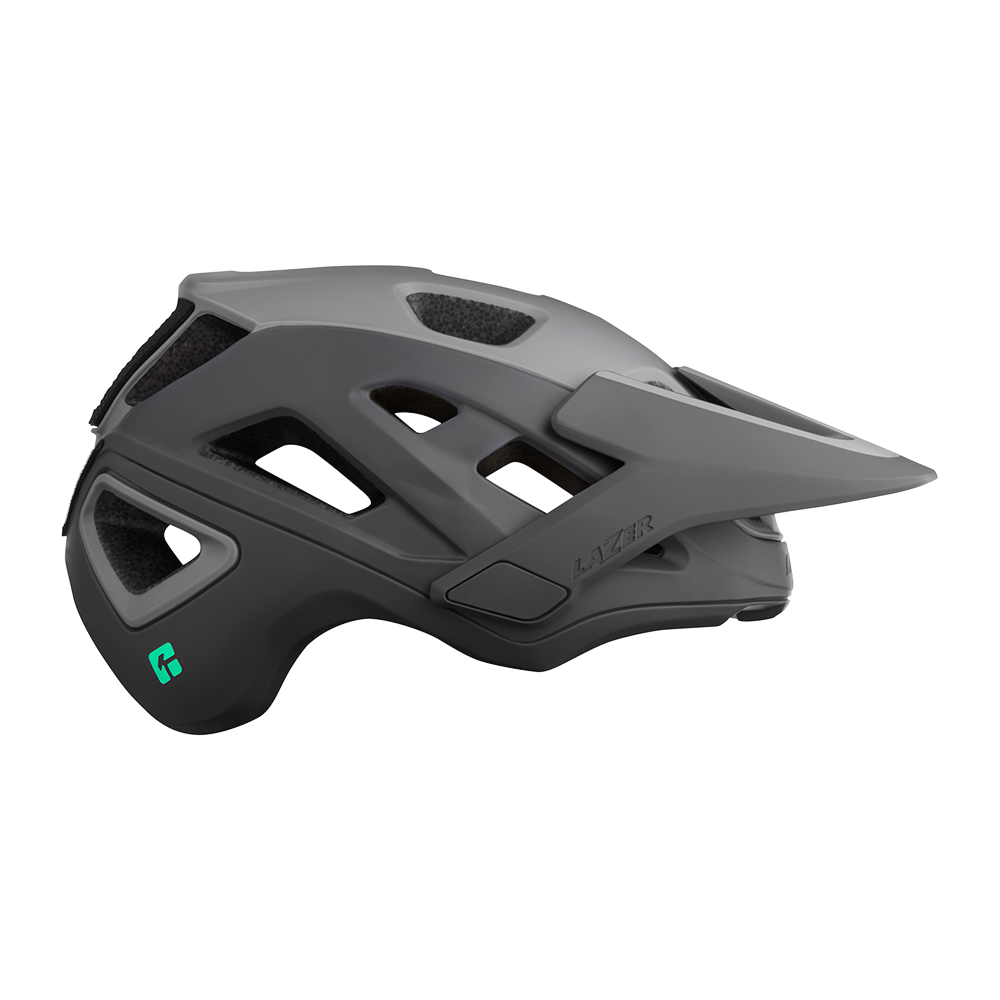
Matte Dark Grey
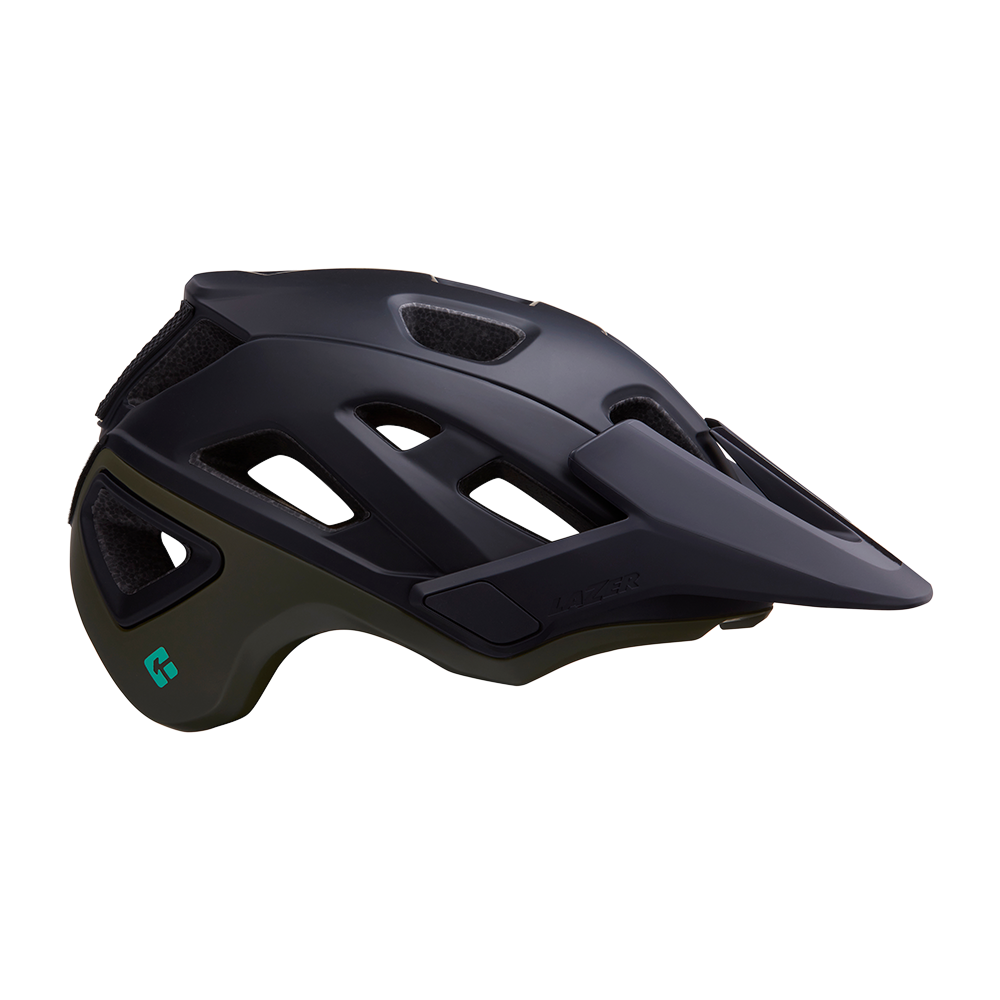
Matte Blue Green
KinetiCore Compared to MIPS, etc
In a short span of time, the concept of rotational impacts became prominent, and MIPS especially has been successfully marketed as a good way to address it. However MIPS and its rivals have their disadvantages: hair can get caught in the slip plane, causing discomfort; they add weight as well as cost; they usually compromise the fit of the helmet (due to added bulk); and ventilation also suffers.
Where systems like MIPS use various methods of separating a helmet's layers to isolate the head from the helmet's rotation, Lazer's approach is different. Rather than employing a slip plane, KinetiCore is composed of molded blocks and channels that form part of the helmet's Expanded Polystyrene (EPS) Foam to create controlled crumple zones, designed to work the way modern cars do, to dissipate impacts through deceleration and absorption. It is a simple and elegant approach to the problem.
It also addresses many of the issues that riders have with MIPS. KinetiCore is light (the new Jackal KinetiCore weighs 50 grams less than the Jackal MIPS, other Lazer KinetiCore models dropped even more weight). Lazer also says it ventilates better (albeit only by 5%, which I doubt will be noticeable), but the absence of added material and bulk makes for a helmet that fits well and doesn't snag hair. MSRP of the Lazer KinetiCore Jackal is set at 285 CAD / 220 USD, so that advantage was not realized over its predecessor. However, that's more a function of the other features built into the Jackal, as Lazer has rolled out six new helmets with KinetiCore altogether, including one aimed at kids and one for toddlers that retail for a very respectable 65 CAD / 50 USD.

A closer look at KinetiCore shows its array of blocks and channels.
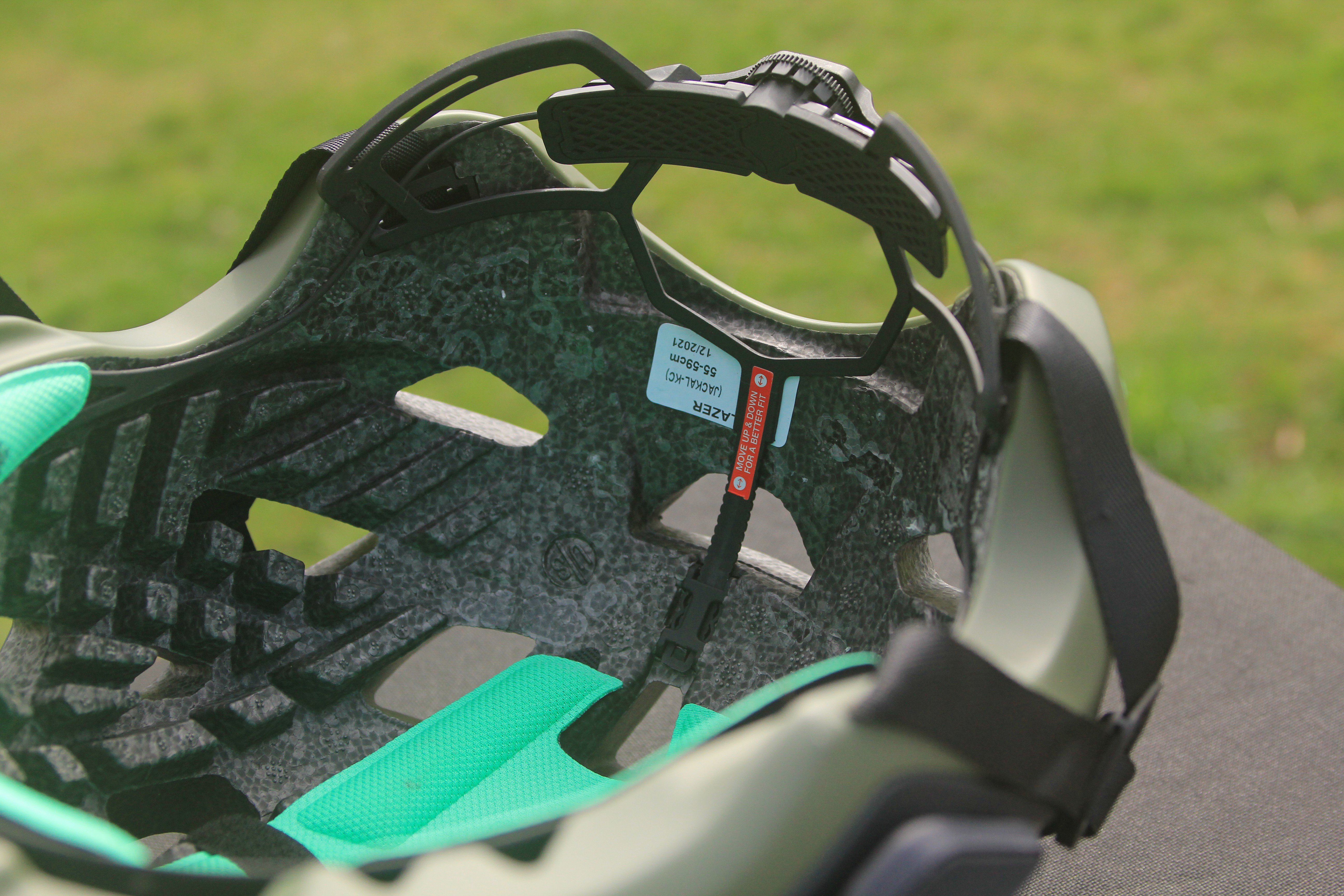
They form crumple zones that are designed to collapse and reduce the severity of straight or rotational impacts.
Lazer Jackal KinetiCore Features
This new Jackal is similar in appearance to the last one, which we reviewed a little over a year ago, and many features are similar:
- It is lighter at 340g in size Medium vs the old model which we weighed at 399g
- Vertical and horizontal fit adjustment with the Turnsys dial and a harness that moves up and down at the back
- Rubberized goggle grippers at the back of the Jackal help with retention
- A lightweight magnetic buckle is easy to use
- Strap on camera or light mount
- 3-position goggle-friendly visor
The main difference between that Jackal which used MIPS and this new one is the switch to KinetiCore. Otherwise the vent shapes look to have been tweaked slightly, but the principal shaping seems very similar.
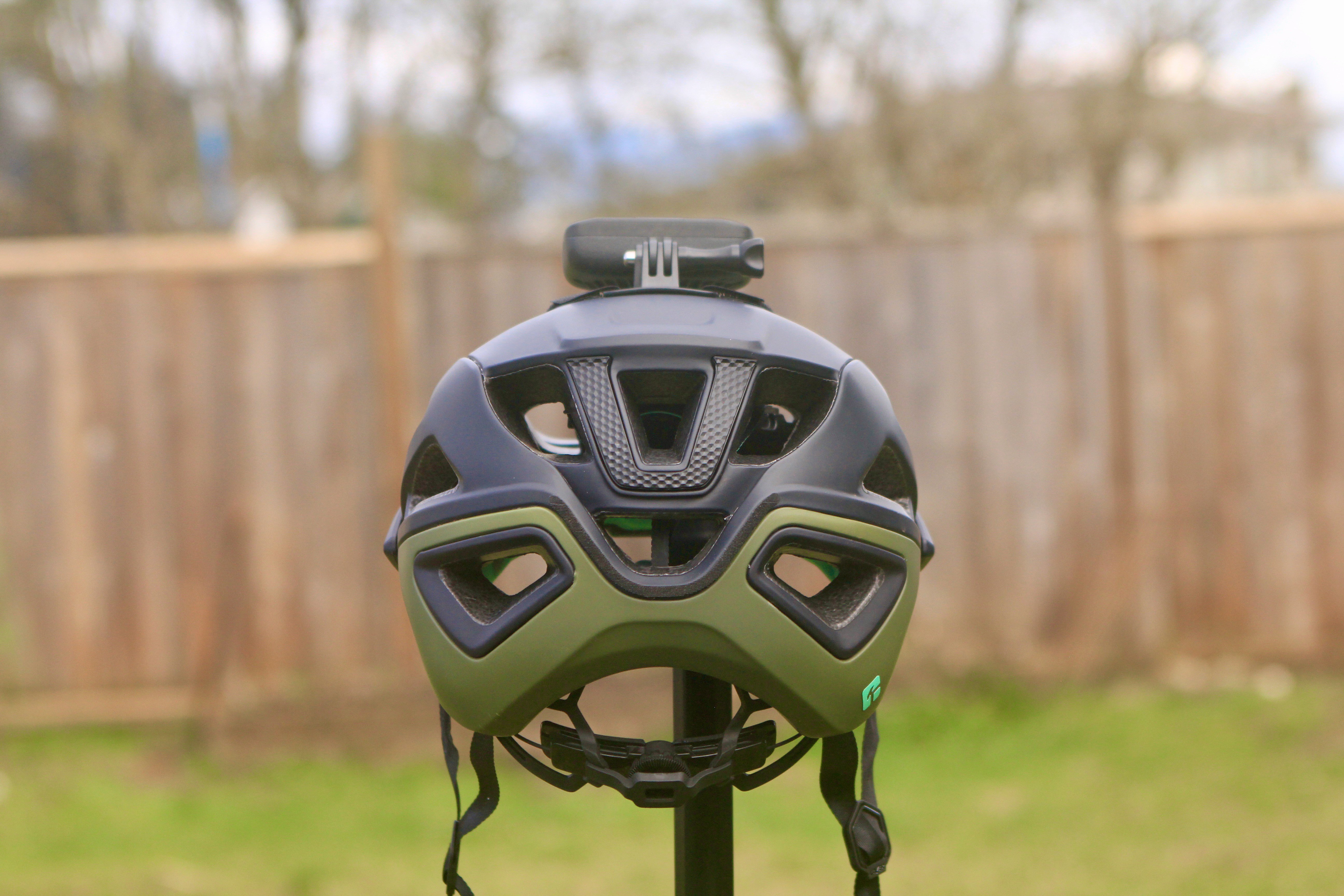
The Jackal from the back. You can see the goggle gripper zone, low coverage, the Turnsys buckle system, and good venting.
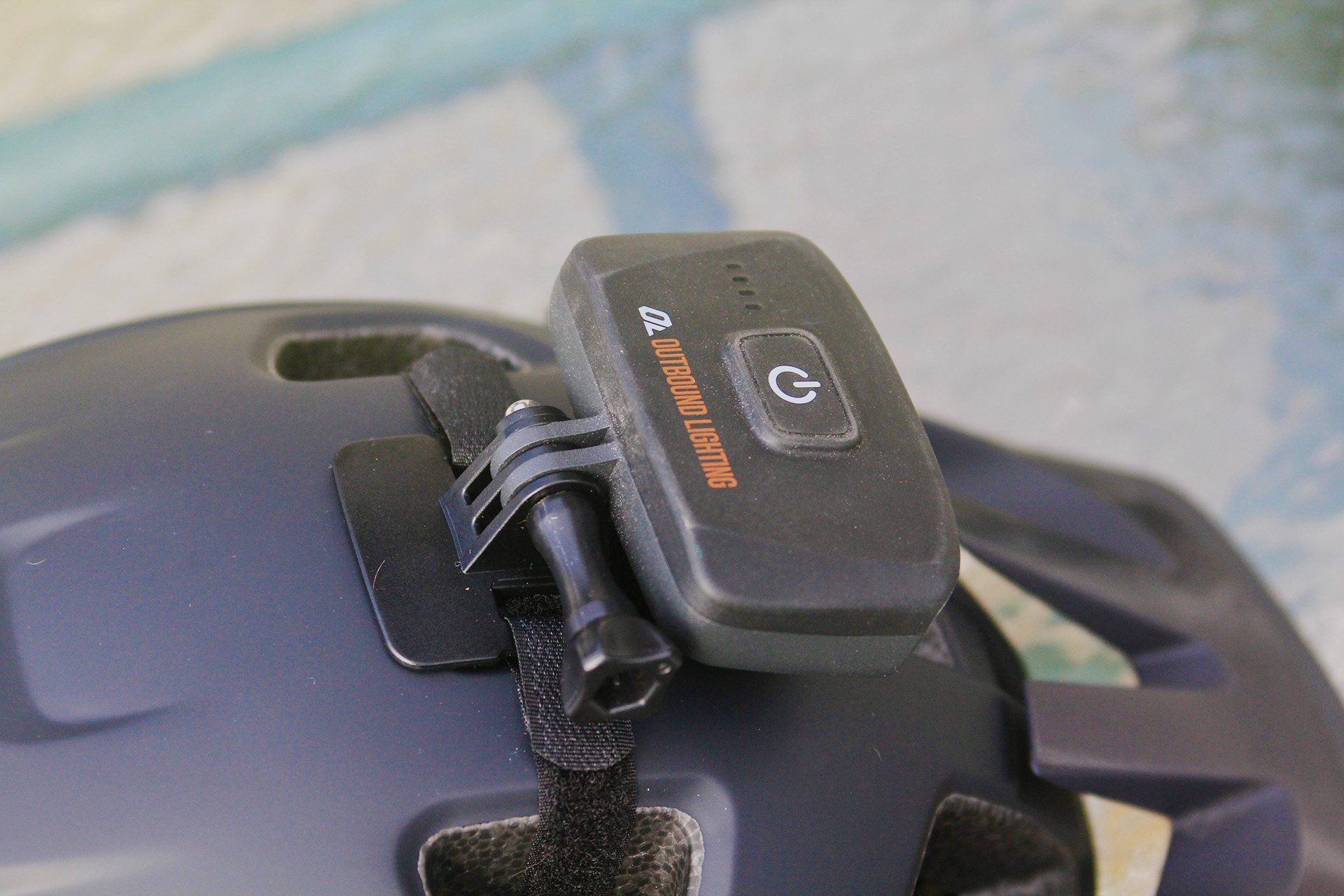
Accessory mount straps to the top. It's not the cleanest or quickest to mount, but it's secure and works with GoPro compatible mounts, giving you lots of options for lights or cameras.
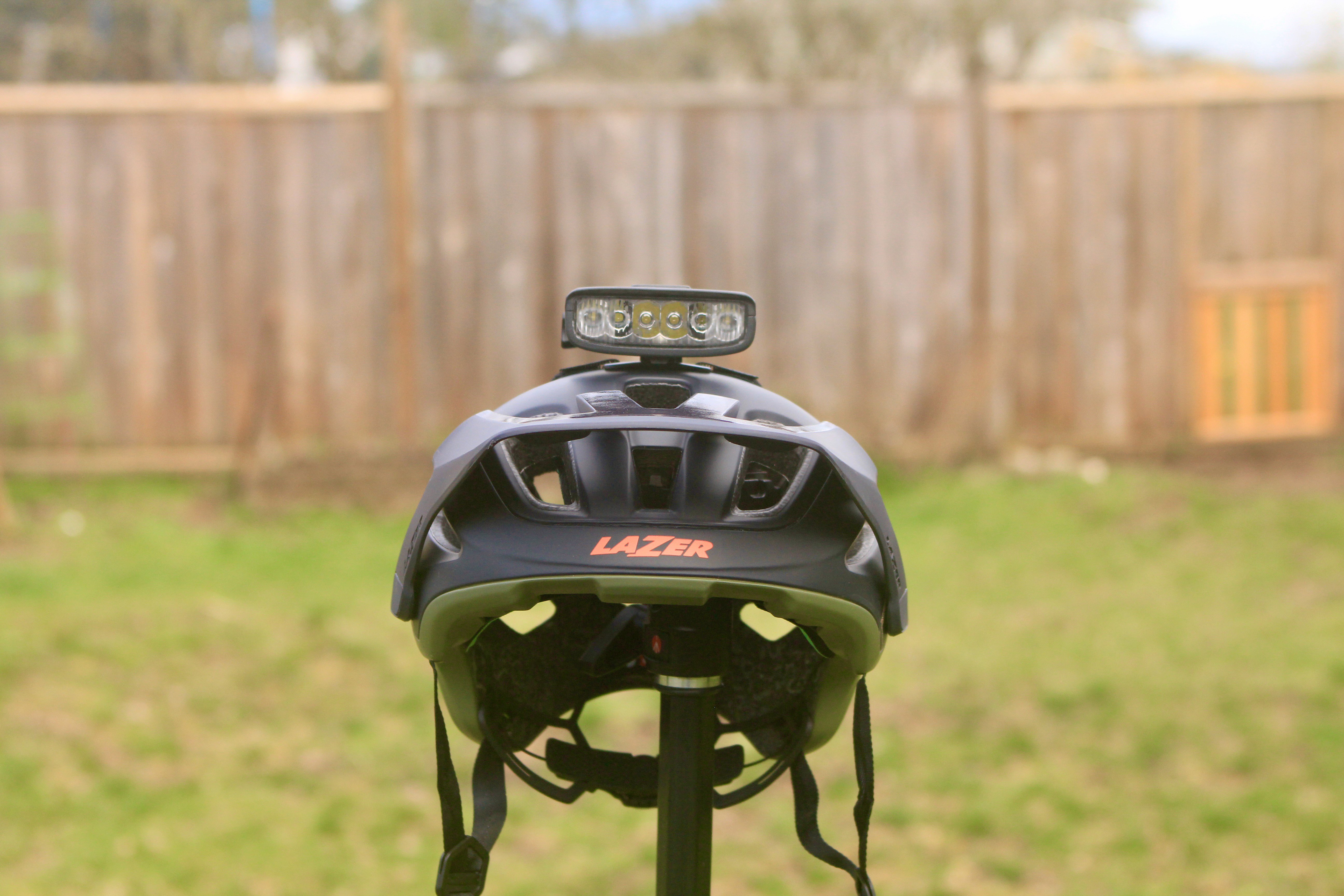
The 3-position visor in the high position allows plenty of frontal venting and room for goggles.
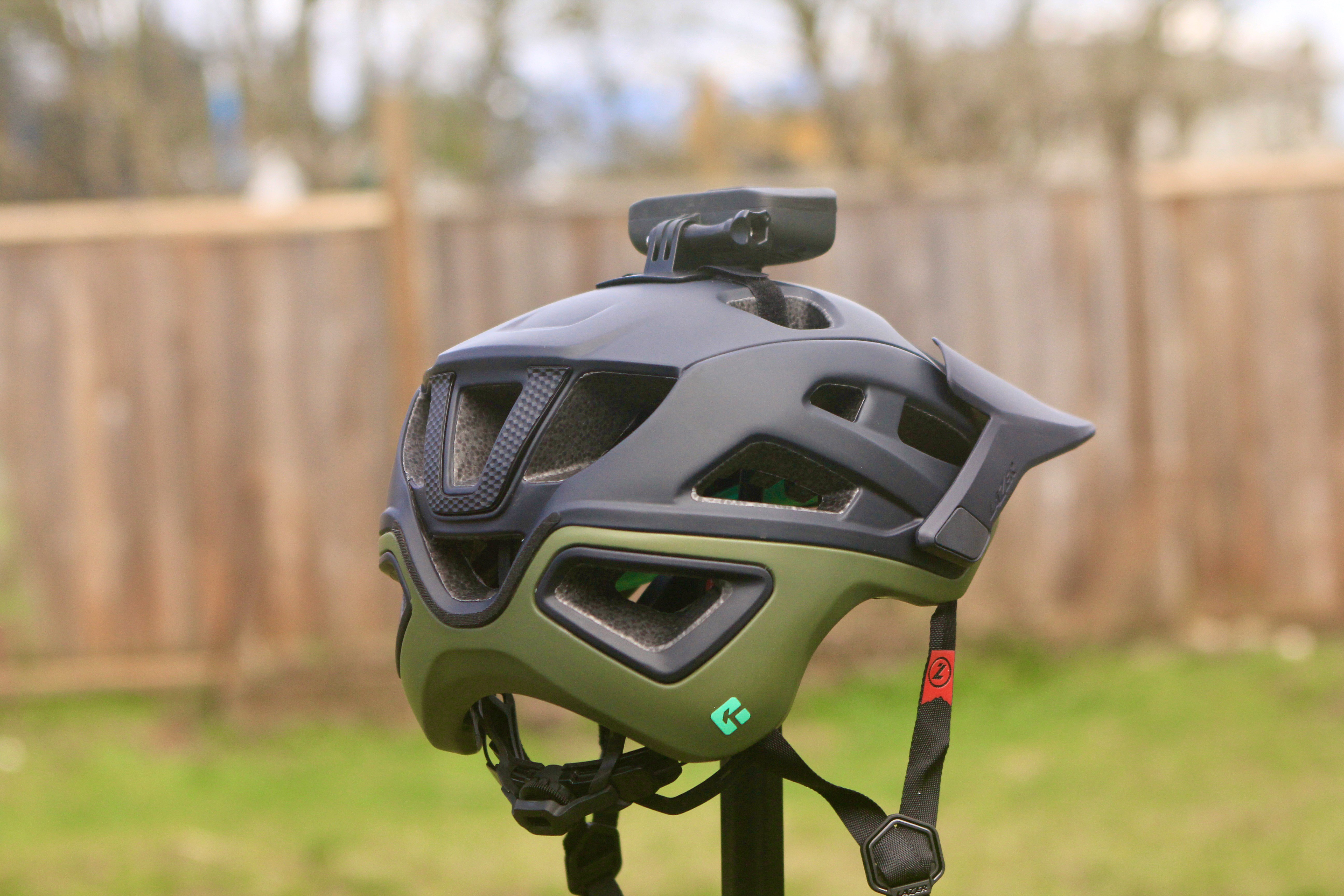
The 3/4 view shows the coverage at the back.
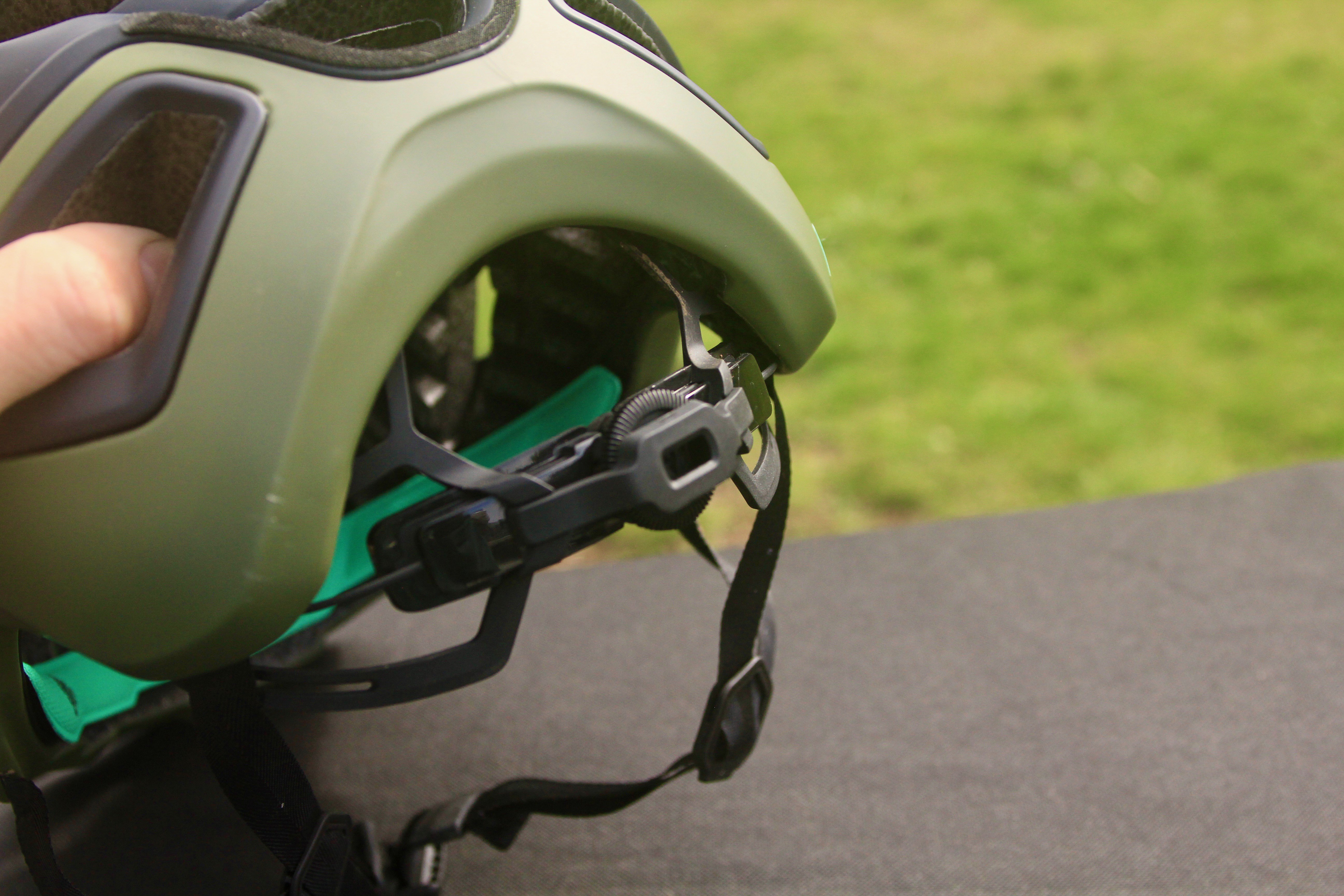
The Turnsys buckle is easy to locate and operate with gloves on.
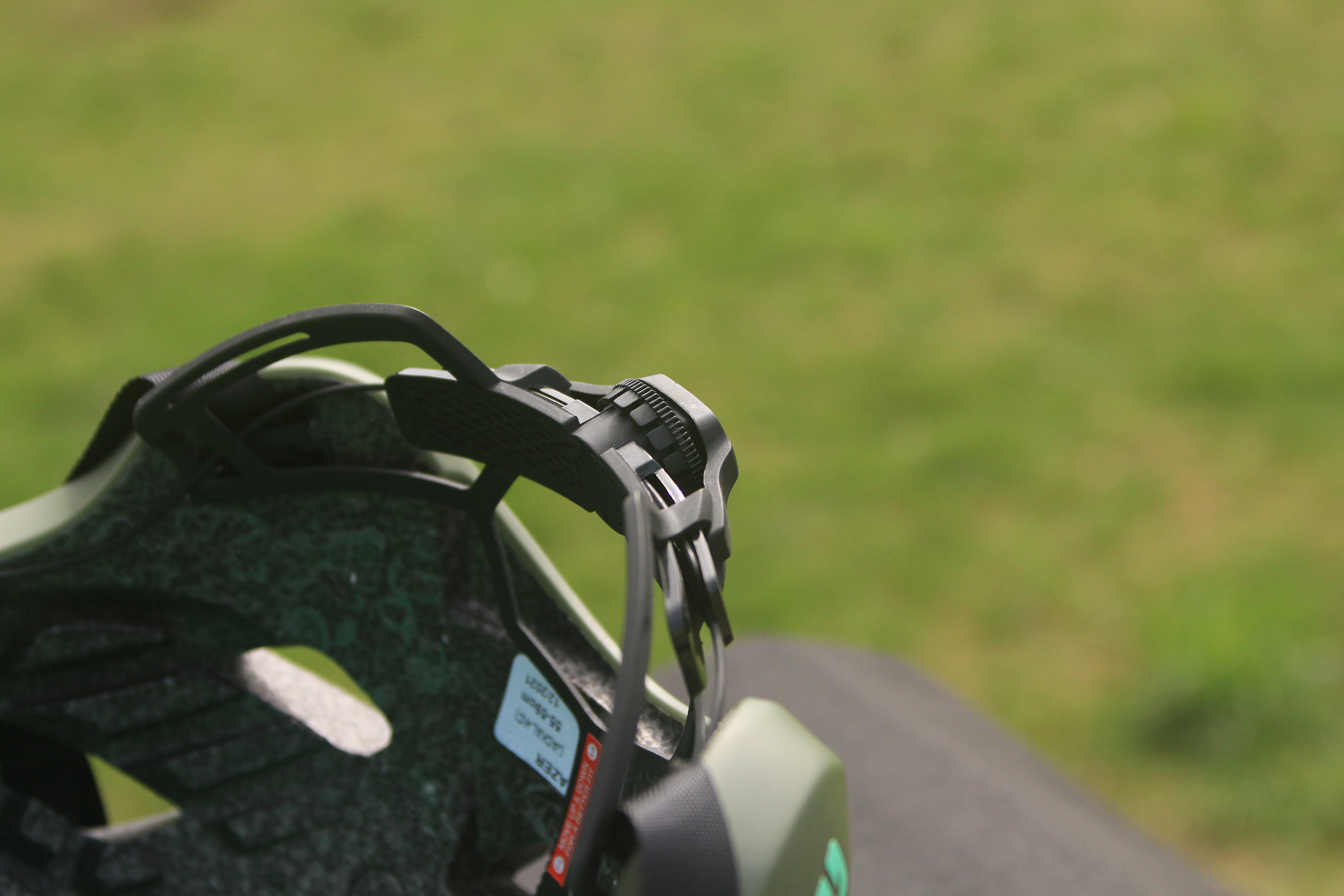
The buckle protrudes a bit, but is well-protected and hidden beneath the shell while the helmet is on.
Early Impressions
As I mentioned earlier, there hasn't been much time to ride with the Jackal yet, but first impressions are positive. The fit is very secure: the adjustable harness envelops the back of my head snugly and any amount of upside down head shaking with the strap undone will not shake it loose. It's on there, but not uncomfortably tight. The Turnsys buckle primarily grips the sides of my head just behind center and a bit at the temple. It feels like one of the most effective examples of this type of fit adapter. The twisting buckle is easy to locate at the back of the head and operate with gloves on and a quick adjustment while riding is dead easy. Small tweaks to the straps took very little time to get them clear of my ears and get the magnetic buckle in the right spot under my chin.
You do not notice KinetiCore's blocks and channels with the helmet on - there are no pressure points or any indication that they're in there. The Jackal's light weight adds to the comfortable feeling. It's too early in the year to really test ventilation - mid day temps are still hovering around 10 degrees C.
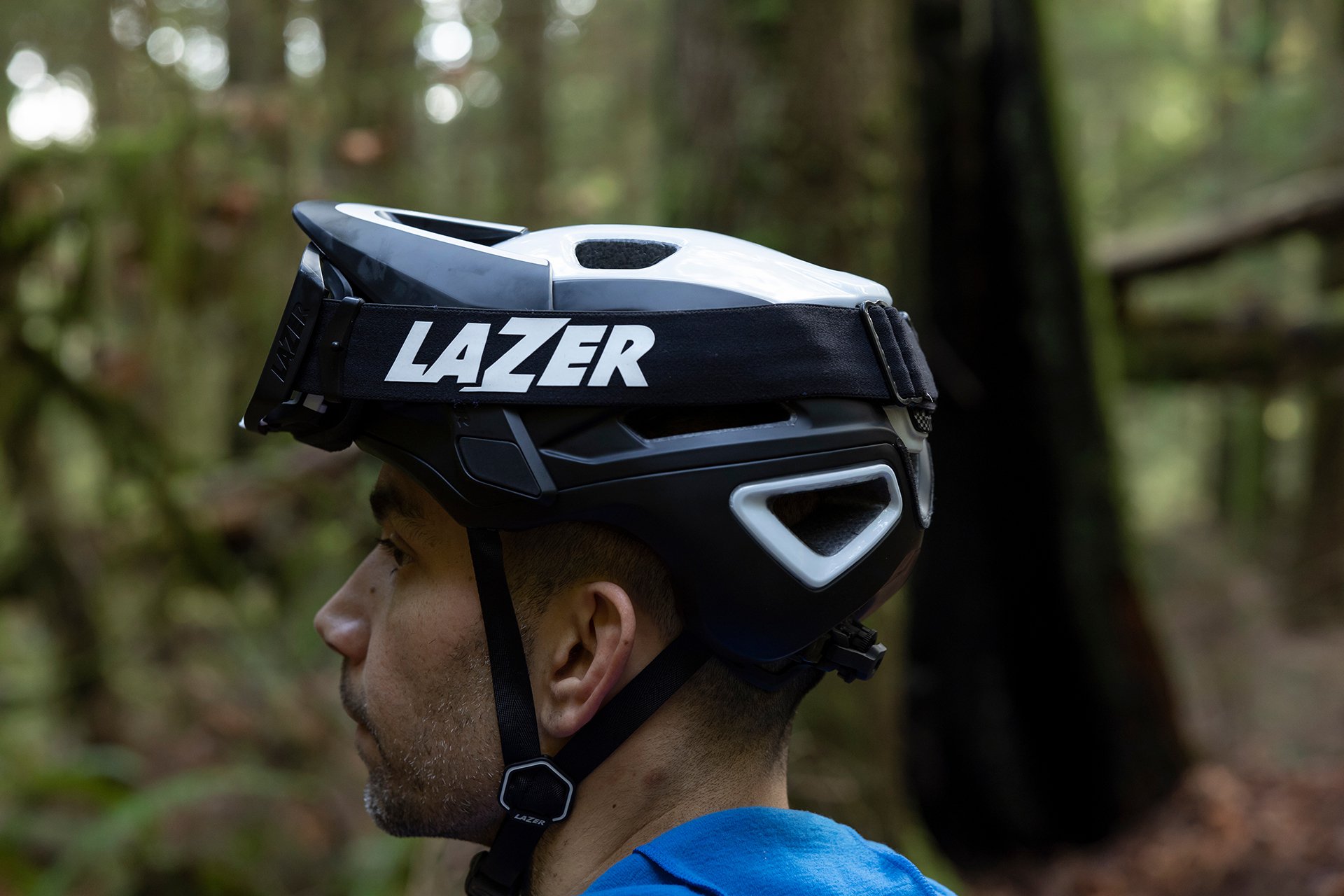
Since I just got the helmet in hand, we haven't had a chance to properly shoot it. So here's a photo supplied by Lazer of local artist and ripper Nigel Quarless making the Jackal look good.
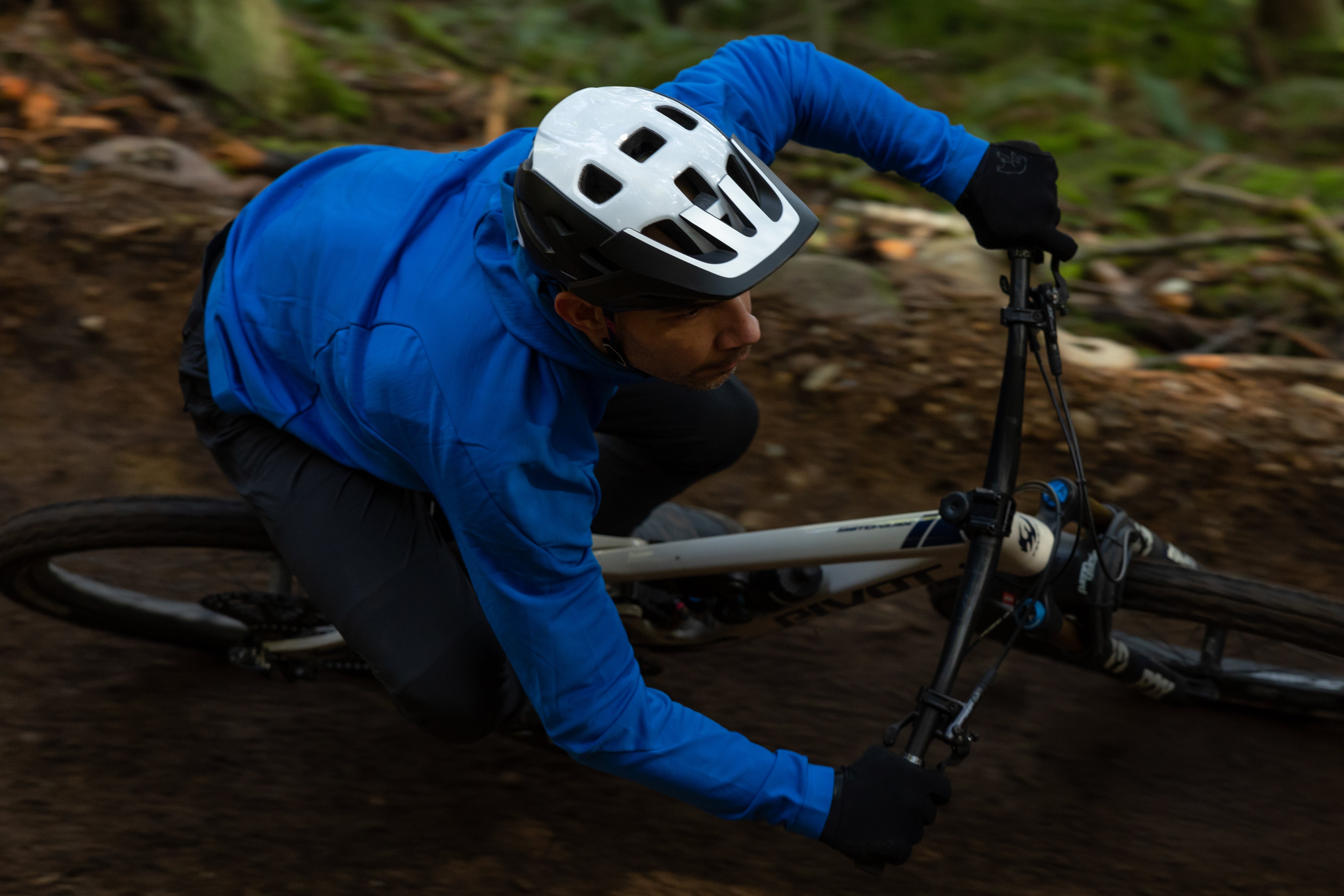
Here's Nigel making it look even better.
Other new Lazer KinetiCore Helmets
Besides the new Jackal, Lazer is also rolling out a comprehensive lineup of new KinetiCore helmets, from the high-end aerodynamic Vento KinetiCore, to the CityZen (targeted at urban and rec riders) and, impressively, two helmets for the smaller riders out there: the Nutz and Pnut.
MTB - Lazer Jackal KinetiCore - 299 CAD // 219 USD // 340 grams
Road - Lazer Vento KinetiCore - 399 CAD / 299 USD // 290 grams
Road - Lazer Strada KinetiCore - 149 CAD / 109 USD // 290 grams
Urban/Sport - CityZen KinetiCore - 79 CAD / 59 USD
Kids - Lazer Nutz KinetiCore - 65 CAD / 49 USD // 250 grams (90g lighter than the Gekko MIPS)
Toddler - Lazer Pnut KinetiCore - 65 CAD / 49 USD // 240 grams (90g lighter than Lil'Gekko MIPS)
The Problem with Helmet Testing
Having spoken with helmet designers from many different brands over the years, the people tasked with figuring out how best to reduce head injuries all seem very knowledgeable, dedicated and serious about finding solutions rather than generating profits. The odds are stacked against even the most honest and up front would-be sharers of information: everyone's brain reacts differently to trauma, making it extremely difficult to conduct meaningful studies; laws and the threat of litigation makes it illegal (not to mention reckless) to make bold claims about your helmet being able to prevent concussions and other injuries, which is why the language is always crafted very carefully. And not much research has been done to this point.
In recent years one independent body - the Virginia Tech Helmet Lab - has made a name for itself for its research into helmet efficacy across a variety of different sports including football, hockey, and - as of 2018 - cycling. As soon as they started publishing helmet ratings for bike helmets, manufacturers started using those ratings to market the safety of their helmets. However, I'm not sure the VT lab's tests are all that representative of real world conditions, especially for mountain bikers: to replicate rotational impacts, they drop a helmet with a weighted headform inside it from a prescribed height onto an anvil coated with sandpaper that "...simulates the friction between a helmet and the road."
Now, I'm not claiming to be a helmet engineer or a brain scientist here, but sandpaper on a smooth surface doesn't seem like a great indicator of the variables mountain bikers face in a crash. Also, a headform that isn't attached to a neck and body probably doesn't behave like a rider falling off their bike, and I have heard it said that the way tests are currently set up favours helmets equipped with MIPS and other, similar technologies. By no means do I claim to know whether or not MIPS, Kineticore, etc are effective, but I think a healthy dose of skepticism is warranted.
We don't want to get too deep here, that's an article for another day. VT does test for different types of impacts, at different speeds and areas on each helmet, and they are developing a catalog of head-to-head test results that, whether you agree with their methodologies or not, at least establish a base line for results under certain conditions. VT has been studying brain injuries in sports and the influence of certain types of helmets on the number and severity of brain injuries for years, amassing a decent amount of data.
For its KinetiCore launch, Lazer is relying heavily on its bevy of 5-star ratings - and indeed Lazer's helmets have always ranked highly in VT's evaluations. But that is the only independent testing that manufacturers seem to use and I guess if this massive tangent leads me anywhere, it is here: I hope that in the near future, Virginia Tech isn't the only independent body testing bike helmets. I'm not saying there's no value in VT's testing and results, but there needs to be more science, and more scientists, studying brain trauma and prevention of brain injuries.
Until then, we have a five star rating system that has concluded that MIPS - and now KinetiCore and systems like it - are the best thing we currently have to reduce the threat of concussion when we hit our heads while out riding. Unfortunately it's really hard to be sure just how good that science is - yet.

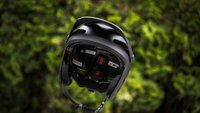
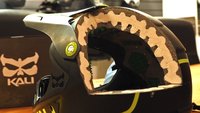
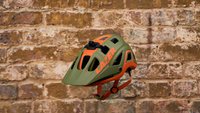
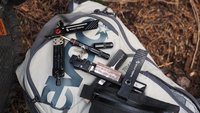

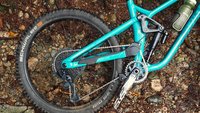
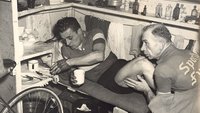
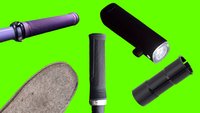


Comments
JVP
1 year, 9 months ago
Crumple zones make a LOT of sense, as do the dual-density foams in some other helmets. I like what they're doing here. That said, I still 100% go for a well fitting helmet over any ratings, my head isn't shaped the same as their test rig. It's all about fit (those who know me know that's a recurring theme).
I hope all helmet manufactures start putting secure glass holders in their helmets. That's now a deciding feature for me. Luckily there's at least one helmet on the market that fits my narrow head shape and has great glass grippers.
Reply
Pete Roggeman
1 year, 9 months ago
Couldn't agree with you more on all counts.
Reply
ohio
1 year, 9 months ago
Which helmet fits your narrow/long oval head? I find it endlessly frustrating that neither the MFGs, retailers, nor media have put in the work to catalog their respective head shapes. In the motorcycle world, the media started noting this, and the retailers picked it up - now I know I'm an "intermediate-to-long oval" and have a "Shoei" head. Because of that, I also know I fit AGV and a bunch of others, and if I go to Revzilla, I can even filter options by head shape. Why does this not exist in the bicycle world?
Reply
JVP
1 year, 9 months ago
Smith Session. The other Smith helmets do not fit me at all.
Now I need to find a vented “enduro” full face that fits narrow. Got any recs?
Totally agree that head shape should be listed so we can figure it out.
Reply
Kango
1 year, 9 months ago
Have you tried POC helmets? They fit very narrow.
Reply
olaa
1 year, 9 months ago
Really cool to see new helmet tech! The VT testing is good to have, and for those that are interested in other independant testing there is the Folksam helmet testing. That one has been done since 2015 and is similar to the VT testing protocol. It's a cooperation between Folksam (an insurance company) and the Swedish Royal Technical University, and the results are peer-reviewed published research. When I look for a new helmet i usually cross-reference the VT and the Folksam tests aiming for top results in both and a good fit :)
Link to a pdf of the Folksam 2021 test in english: https://mediaarkivet.nu/Sites/A/Folksam+Mediaarkiv/5467?encoding=UTF-8
On their website they have a list of all helmets tested since 2015 (unfortunately only in swedish, pdf's for each year are available in english). https://www.folksam.se/tester-och-goda-rad/vara-tester/cykelhjalmar-for-vuxna
Reply
Ripbro
1 year, 9 months ago
Good looking helmet with some innovative features.
MIPS certification by nature seems deceptive. If it’s 10% more safe rotationally , it receives certification. But they keep you in the dark with how much more safe. Is it 12% ? I see boasts of 42% and 54% but the results are all locked down.
I guess safer is safer, but I returned a full face mips because it was loud. It rattled and creaked constantly on smooth trails. I hope that I’m only loosing out on 10% I made my purchased because it was the best fitting of the bunch
Reply
Pete Roggeman
1 year, 9 months ago
You've highlighted the issue. It's really hard to quantify how much safer a helmet is because results are different for everyone - a given crash may be a serious concussion for one person, and someone else may be fine. On the face of it, it's easy to understand how MIPS or KinetiCore can help protect to the head. The big question is whether the amount of extra protection offered is worth the other tradeoffs (weight, cost, etc).
Reply
YDiv
1 year, 9 months ago
Really interesting article. Reminds me of what Andrew wrote earlier, with regards to Kali using softer foam and pursuing a cushion/deceleration approach.
Totally agree with the last bit, independent testing is the way to go, as is evident with Adam Kerin's findings on chain lube/wax(!!!) over at ZFC. Lots of word vomit and data, but very worth checking out if you have the time! Really helps to sort through the bs as almost every single company claims their lube is the best for every condition, but someone has to be wrong...
Reply
Bikeryder85
1 year, 9 months ago
I remember seeing an article (may have been linked here, apologies if so) about military helmets and concussions a couple years back. They used a dummy head full of sensors and fired an explosive charge at varying distances. Oddly enough, the best scoring helmet was the British WWI helmet with the full brim...far outscoring modern helmet designs. It was a great highlight of just how little we know about brain trauma and how to best protect from it.
Reply
Pete Roggeman
1 year, 9 months ago
That wasn't posted here but I'd be interested to read it.
Reply
Allen Lloyd
1 year, 9 months ago
This design looks like it would offer some way to tell if the helmet needs to be replaced after a crash. Over the years I have broken quite a few helmets and thrown them away after a hard crash even if they look fine. That said I am sure over the years I have tossed a few that were still good to keep going. Adding a way to know if a helmet is still good would be an awesome feature.
Reply
Pete Roggeman
1 year, 9 months ago
That's a really good point, although it doesn't account for damage to the entire EPS layer, not just the blocks and channels...so you could have a helmet with damage and not know it needs to be replaced. Still, if any blocks or channels were distorted or crushed, that would be an obvious sign it was time to move on to the next one.
Reply
hambobet
1 year, 9 months ago
I'm pretty sure my 1982 ford fiesta had a 5 star safety rating on release because the steering column wouldn't go straight through your chest like earlier cars, oh and a front seatbelt. The tests change as the tech evolves so we'll see where we are in a few years.
Reply
Please log in to leave a comment.